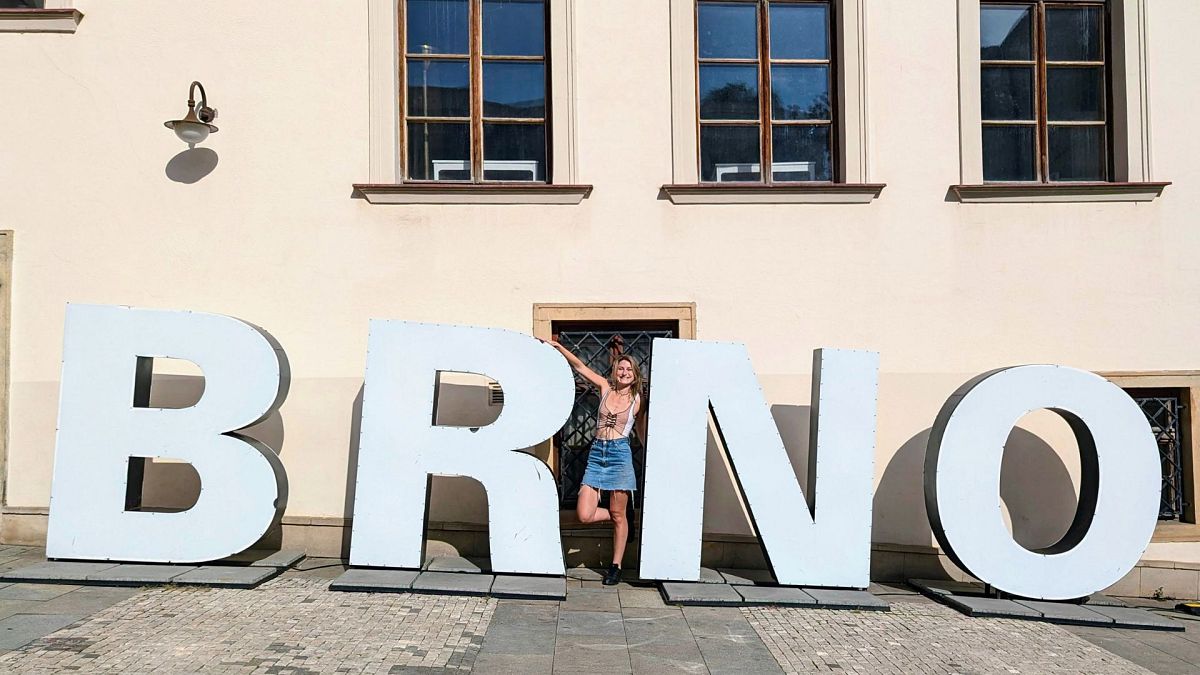Here’s why under-the-radar Brno should be on your 2025 travel list.
Midday is 11am in Brno, marked by the chiming astronomical clock which remains an enigma even to the locals. On the hour, this large, erect black granite structure releases a marble to one of three catch points – usually guarded by the hands of children.
Every wonky piece of art and unusual sculpture here has a legacy or folk story that speaks of Brno citizens’ courage and lighthearted nature.
Like many, I hadn’t heard of Czechia’s southern second city before. I associated the country with the busy capital and popular stag-do destination, Prague.
But on my 1.5-hour train from Vienna, university student Ilona Szarazova tells me, “Brno feels like a big village, everybody knows everybody and you’re never stressed.”
I soon realise that off-target expectations and unexpected quirks are part of the fun in this undiscovered gem.
Getting to know Brno: Military myths and tech innovation
Walking to the centre of the main plaza, Freedom Square, I reach Brno’s beloved clock.
“We’ve got a good sense of humour,” local guide Sára Anna Hudcovicová says. “This is our version of the mediaeval mechanical clock in Prague. I think it’s coincidental that many of our sculptures look like a, you know…”
Phallic in appearance, this unusual structure symbolises Brno’s bravery in its defence against the Swedish siege in 1645 – which is why it was designed to look like a bullet.
According to the myth, Swedish soldiers planned to give up attempts of invasion one day at 12pm. When the locals found out, they adjusted the city clocks to ring an hour early.
Nothing’s quite as it seems here. I’m in one of Europe’s leading tech innovation hubs yet I’m wooed by the late-gothic period architecture and neo-Renaissance elegance of Vegetable Market square.
Around the stalls selling autumnal dried bouquets and early Oktoberfest pints, it’s atmospheric but not too busy. While 13 universities are in the surrounding metropolitan area, only 400,000 people live in the city.
“Beneath our feet is a labyrinth of passages and cellars,” Sára says. “You can go down there to see where food sold at the market was stored in the 13th century.”
Brno’s rich history: Catacombs and scientific greenhouses
Among the abundant deck chair socialising spots, parks filled with benches and calming water features, are plenty of impressive attractions. Holding the remains of 50,000 people is the second largest catacombs in Europe.
A 20-minute walk away is Žlutý Kopec Reservoirs, four underground water tanks that were shut down in 1997 – and this year newly opened to tourists and for music events.
While they date back to 1894, there’s something futuristic about the illusion of infinite space created by diagonal rows of pillars through each dimly lit chamber.
Mendel’s Greenhouse, where the theory of genetics sprung from, a 1770 cathedral and the 13th-century UNESCO-listed Tugendhat Villa, to name a few, have been here a long time. But the country’s borders only opened to tourists in 1989.
Prague had a headstart after the communist revolution, being a capital city with a major airport. But Brno built its appeal through careful attention to detail in the city experience.
The streets are spotless, everyone I meet speaks excellent English and it’s easy to get around – the trams meet at the train station on the hour throughout the day.
I’m always only a few steps away from a trendy cafe or buzzy bar serving the best pilsner I’ve ever tasted and there are plenty of top-quality restaurants serving global cuisines.
Brno is a hub for digital nomads
Over the years the tech scene helped pave the way for tourism by bringing businesses and revenue into Brno.
“Thanks to initiatives like JIC, more technology-oriented expats choose Brno,” says Ondřej Dufek, co-founder of Flatio, an accommodation rental platform for digital nomads.
Set up two decades ago, JIC (the South Moravian Innovation Centre) was one of the first technological incubators in the eastern part of the European Union.
Since launching in Brno in 2016, Flatio has seen increasing yearly bookings. Preliminary findings of the company’s 2024 Digital Nomad Report ranks Brno 10 out of the 28 best cities for remote workers, worldwide.
There are 15 co-working spaces dotted across the city and long-term lets are available for up to a year with Flatio.
Positioned 123 in Numbeo’s recent European cost of living index, it’s easy to keep things cheap while living here, too.
Beyond Brno: Rustic villages and wine cellars
A 30-minute drive south and I’m in Pálava Nature Reserve. From the ruined 1200 fortress on a hilltop surrounded by rustic villages, I admire miles of fruitful vineyards beside Věstonice Reservoir.
On the other side of the water is Strachotin, one of Moravia’s recognised cultural heritage villages for the wine cellar alley beneath its colourful row of houses. It’s busy with cyclists who stop along the reservoir to explore the historic network of underground cask storage spaces and sample the region’s finest white wines.
While it feels a world away from tourist hotspots, it’s only a few hours by train to Vienna, Prague and Budapest. Even though Brno is flying under the radar for now, it won’t stay a secret for long – but that’s why it’s the perfect time to discover this city full of surprises.
Read the full article here
